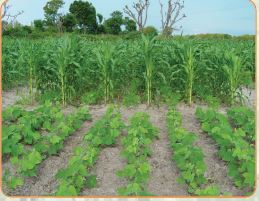Maize farmers can reduce weed infestation in their farms by 31 to 60 per cent by intercropping mucuna, an herbaceous legume that also increases soil fertility by fixing Nitrogen in the soil.
Mucuna produces a large biomass and can provide a ground cover that effectively controls weeds which compete with crops for water, nutrients and light.
Once mucuna dries up it forms a dense layer of plant material that prevents germination of weed seed leading to a clean seed bed.
The legume reduces the amount of grass in the field by 70 to 98 per cent in two to three seasons. Besides maize, mucuna can be used as cover crop between rows of crops such as coconut, oranges and mangoes.
Striga weed is one of the weeds that attack maize farms in Kenya and Africa as a whole. According to the International Maize and Wheat Improvement Center (CIMMYT), the weed infests over 20m ha of crops in sub-Saharan Africa each year causing losses estimated at Sh100bn.
In East Africa, the weed infests over 1.4m hectares yearly with Kenya accounting for 340,000 ha of the total land invaded by the weed.
Related content
Uasin Gishu farmer who dumped maize for vegetables does not regret
Drought tolerant yellow maize which can yield eight tonnes per acre best for silage making
Intercropping sorghum and legumes can give 35-60 per cent more profit than maize bean system
Maize intercropped with mucuna
The striga weed causes stunted growth of maize by attaching itself to the roots of the host plant extracting essential nutrients and moisture necessary for growth.
Weeding and spraying of chemicals of one acre requires at least Sh2,000 per round. Two weeding rounds means the double the amount and hence by intercropping the legume with maize saves farmers in production costs.

















Comments powered by CComment